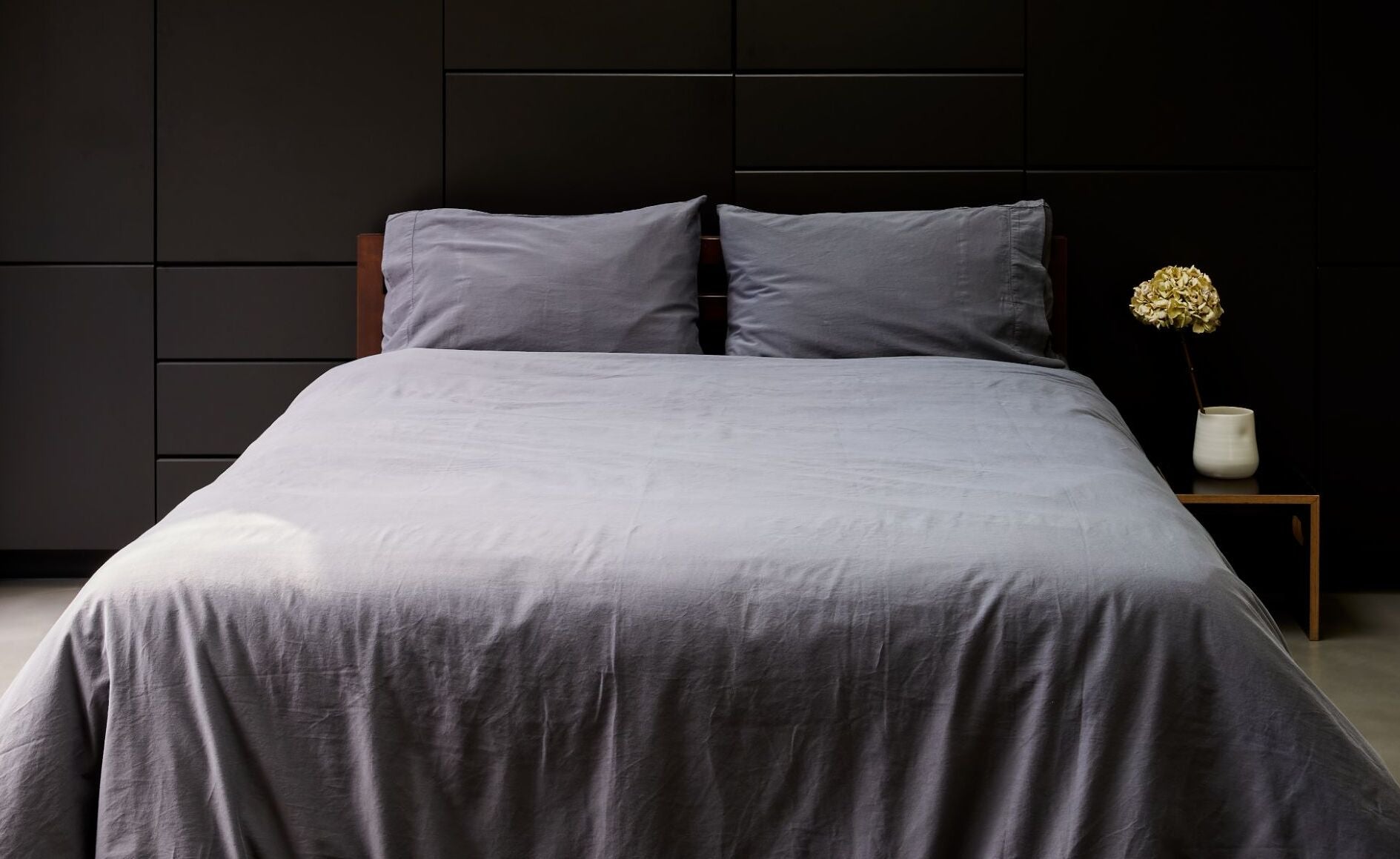365-DAY GUARANTEE | FREE SHIPPING | FREE RETURNS
365-DAY GUARANTEE | FREE SHIPPING | FREE RETURNS
365-DAY GUARANTEE | FREE SHIPPING | FREE RETURNS
Whenever you shop for bedding, you know that the options are limitless. From materials like silk and linen to cotton, you can find just about any fabric under the sun. Even just the cotton varieties go on and on! Sateen bedding has gained popularity over the last few years, but what is sateen? How does it compare to other bedding and is it the right option for you?
Cotton sateen fabric is traditionally made using cotton fibers. However, sateen itself isn’t a material, rather it’s a type of weaving pattern. But what is sateen weave? This weave follows a strict one-yarn-under, three-yarn-over weft pattern to expose the maximum surface area of each thread. This pattern is unique to sateen material and gives the fabric a wave-like look up close.


Once the fibers are woven, the long-staple cotton fibers undergo a process called mercerization. The fabric gets soaked in lye, then acid to essentially lock the threads in. Treating the yarns creates a smoother texture and a natural sheen. So, what is cotton sateen fabric? This luxurious fabric is made from 100% extra-long-staple cotton. The long yarns are ideal for forming the sateen weave, which exposes a great deal of each thread’s surface area. Sateen also follows aOnce the fibers are woven, the long-staple cotton fibers undergo a process called mercerization. The fabric gets soaked in lye, then acid to essentially lock the threads in. Treating the yarns creates a smoother texture and a natural sheen. So, what is cotton sateen fabric? This luxurious fabric is made from 100% extra-long-staple cotton. The long yarns are ideal for forming the sateen weave, which exposes a great deal of each thread’s surface area. Sateen also follows a satin weave, meaning that there are either warp (vertical) or weft (horizontal) threads on the surface of each side of the material.
The best sateen sheets have a thread count of between 300 and 600 yarns per inch. However, the finest quality cotton sateen sheets consist of combed cotton. Combing the sateen weave sheets removes all shorter staple threads, resulting in a much smoother surface overall. Plus, this primarily natural fabric is hypoallergenic and has a fairly tight weave, preventing dust and dust mites. Cotton sateen is safe for all sleepers — even the most sensitive people.


What is a sateen sheet? While cotton is the most common type of fabric used to make sateen sheets, it certainly isn’t the only option. Here are the most common materials you may find sateen sheets made of:

When it comes to sateen vs satin sheets, the two terms may sound and look alike, but you can’t use them interchangeably. These are two entirely different fabrics! Both materials are glossy, smooth, and luxuriously silky. On top of that, they’re also durable and wrinkle-resistant. However, some significant distinctions separate the two.
What is sateen fabric? This material is often made of cotton (or other short-staple materials, but we’ll get to that later), which makes it hypoallergenic, relatively breathable, and inexpensive. On the other hand, the best satin is made of silk, while polyester, nylon, or other filament fibers are more durable, and cost-effective options.
Cotton sateen fabric follows a weft (horizontal) pattern, while satin follows a warp (vertical) pattern. As a result, satin has a more lustrous, slippery texture that drapes gracefully but readily snags and can be hard to work with.
Like all fabrics, sateen bedding has its advantages and disadvantages. Here’s what you’ll love about sateen along with some of the downsides.
There’s nothing complicated about caring for sateen sheets. Though this is a luxe material, the maintenance is easy! Keep in mind that every textile has specific care instructions that you can find on the garment label. However, here are some general guidelines for how to wash sateen sheets:
Sateen sheets are machine washable and they can go in the dryer! For best results, start by turning your bedding inside out and closing any zippers, if needed (typically for duvet covers). This step helps reduce any pilling and snagging in the wash. Then, add a mild detergent and set your washing machine to the gentle cycle
Immediately remove your linens from the wash to prevent mildew, and toss them in the dryer on the coolest setting possible.
Friction in the washing machine has the potential to cause pilling, so if you’re worried about this, opt for handwashing. Just like with machine washing, you’ll want to use a mild detergent.
You can skip the dryer, too, by laying your sheets over a rack or clothesline to air dry. However, as long as you use the low setting, machine drying is safe too!

Sateen is an ultra-soft, incredibly smooth luxury bedding material with a signature sheen. These sheets are naturally hygienic, wrinkle-resistant, and slightly silky, making you feel like a million bucks. But if you’re a warm sleeper or worried about snagging and pilling, cotton percale sheets may be a better option. At Or & Zon, our collection of organic bedding includes both percale and sateen weaves to please all kinds of sleepers. We carry sheet sets, duvet covers and bed bundles, all with free shipping and a 365 day guarantee! So, what are you waiting for? Shop our incredible collection of organic cotton bedding now!
